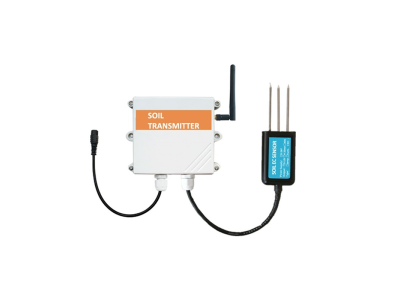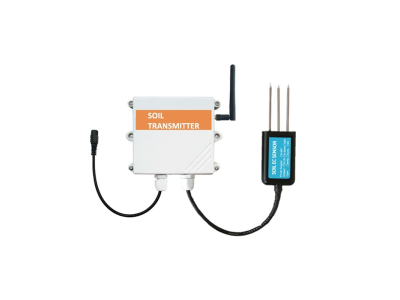Introduction In the ever-evolving landscape of agriculture, the integration of technology has revolutionized the way farmers approach cultivation and management. One of the most significant advancements in recent years has been the utilization of soil sensors to collect real-time data on soil conditions, moisture levels, and nutrient content. This data-driven approach to cultivation has empowered farmers to make informed decisions, optimize resource allocation, and maximize crop yields. In this article, we will explore the transformative impact of soil sensors on farm management and the potential benefits they offer to the agricultural industry.

The Role of Soil Sensors Soil sensors are instrumental in providing farmers with valuable insights into the health and composition of their soil. These sensors are designed to measure key parameters such as moisture levels, temperature, pH levels, and nutrient content, offering a comprehensive understanding of the soil's condition. By leveraging this data, farmers can precisely monitor the needs of their crops and implement targeted strategies to address any deficiencies or imbalances in the soil.
Real-Time Monitoring and Analysis One of the primary advantages of soil sensors is their ability to provide real-time monitoring and analysis of soil conditions. Traditionally, farmers relied on manual observation and periodic soil testing, which often resulted in delayed or incomplete information. With soil sensors, however, farmers can access continuous, up-to-date data on their soil, enabling them to respond promptly to any changes or issues that may arise. This proactive approach to monitoring empowers farmers to make timely interventions and adjustments, ultimately enhancing the overall health and productivity of their crops.
Optimizing Irrigation Practices Water management is a critical aspect of farm cultivation, and soil sensors play a pivotal role in optimizing irrigation practices. By accurately measuring soil moisture levels, these sensors enable farmers to implement precise and efficient irrigation strategies. Rather than relying on predetermined schedules or guesswork, farmers can tailor their irrigation schedules to meet the specific needs of their crops, conserving water resources and minimizing the risk of overwatering or underwatering. This not only promotes sustainable farming practices but also contributes to cost savings and improved crop quality.
Enhancing Nutrient Management The nutritional composition of the soil directly impacts the growth and development of crops. Soil sensors provide farmers with essential data on nutrient levels, allowing them to fine-tune their fertilization practices for optimal results. By understanding the precise nutrient requirements of their crops, farmers can avoid overapplication of fertilizers, reduce nutrient leaching, and minimize environmental impact. Furthermore, this targeted approach to nutrient management can lead to improved crop health, increased yields, and a more sustainable agricultural ecosystem.
Precision Agriculture and Resource Allocation The integration of soil sensors aligns with the principles of precision agriculture, a data-driven approach that emphasizes the precise management of resources for maximum efficiency and productivity. By leveraging the insights provided by soil sensors, farmers can adopt a targeted and site-specific approach to cultivation, tailoring their actions to the unique characteristics of each field or crop. This level of precision extends to resource allocation, as farmers can optimize the use of inputs such as water, fertilizers, and pesticides, reducing waste and environmental impact while maximizing the return on investment.
Challenges and Considerations While the adoption of soil sensors offers numerous benefits, there are also challenges and considerations that farmers must address. The initial cost of acquiring and installing soil sensor systems may present a barrier for some farmers, particularly those with limited financial resources. Additionally, the interpretation of sensor data and the integration of this information into existing farm management practices may require a learning curve for some individuals. Furthermore, ensuring the accuracy and reliability of soil sensor data is crucial, as erroneous or inconsistent readings could lead to misguided decision-making.
Future Perspectives and Conclusion As technology continues to advance, the potential for soil sensors to further revolutionize farm management is immense. The integration of artificial intelligence and machine learning algorithms could enhance the predictive capabilities of soil sensors, enabling farmers to anticipate and mitigate potential challenges more effectively. Furthermore, the development of interconnected sensor networks and data analytics platforms may facilitate the seamless integration of soil sensor data with other agricultural data sources, providing farmers with comprehensive insights into their operations.
In conclusion, the utilization of soil sensors represents a transformative shift towards data-driven cultivation and optimized farm management. By harnessing the power of real-time data, farmers can make informed decisions, enhance resource efficiency, and ultimately improve the sustainability and productivity of their agricultural practices. While challenges exist, the potential benefits of soil sensors for the agricultural industry are undeniable, paving the way for a more efficient, resilient, and environmentally conscious approach to farming.
In summary, the integration of soil sensors in farm management represents a significant step towards data-driven cultivation and optimized resource allocation. By leveraging real-time data on soil conditions, moisture levels, and nutrient content, farmers can make informed decisions, enhance resource efficiency, and maximize crop yields. Despite challenges such as initial costs and data interpretation, the potential benefits of soil sensors for the agricultural industry are considerable, paving the way for a more sustainable and productive approach to farming. As technology continues to advance, the future of soil sensors holds promise for further revolutionizing farm management and contributing to a more efficient, resilient, and environmentally conscious agricultural ecosystem.






